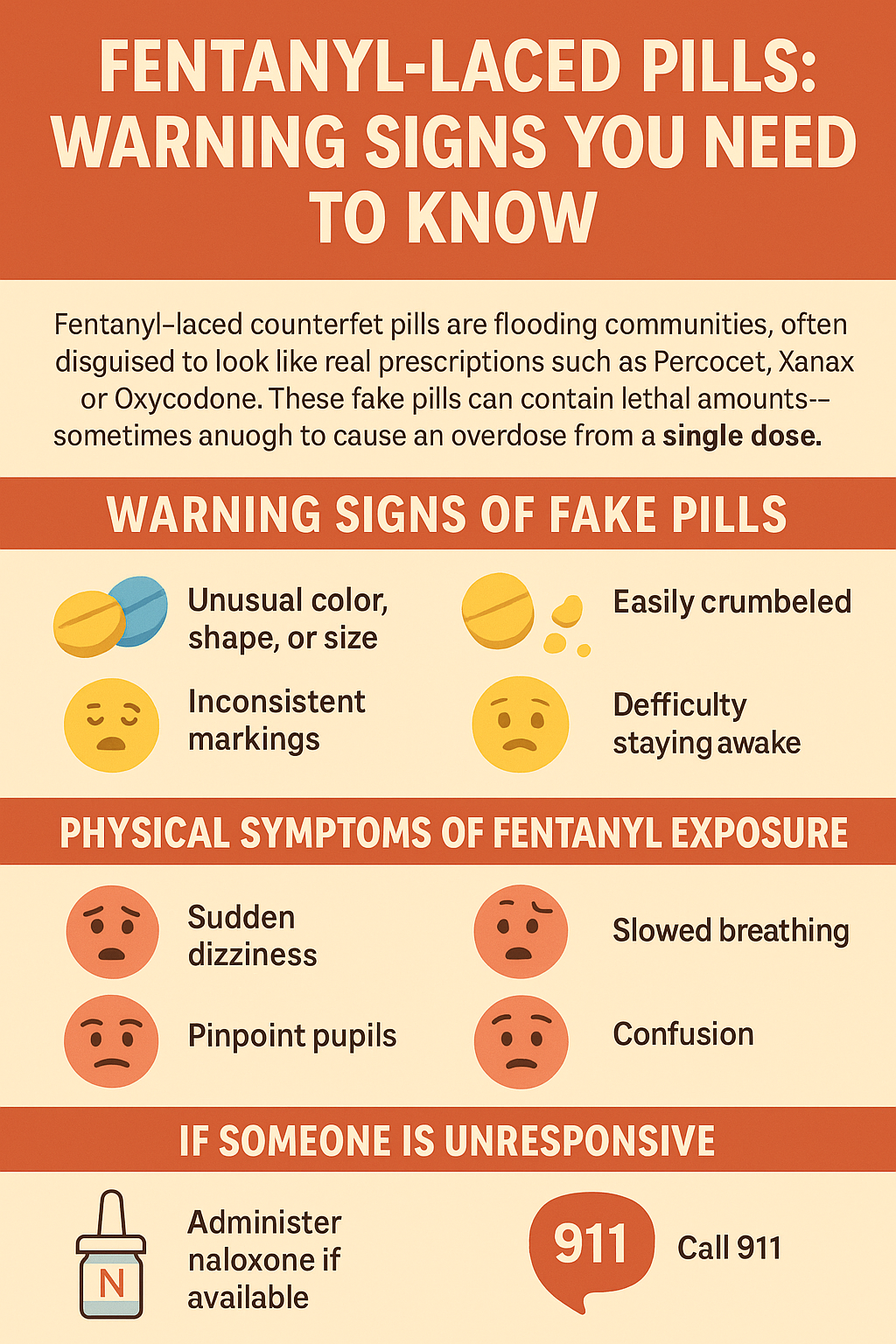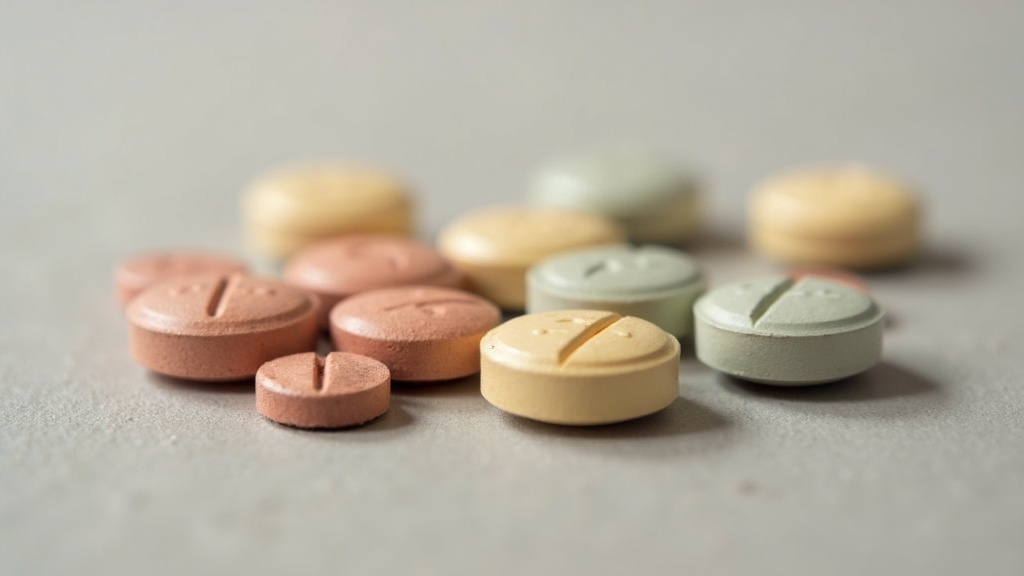Fentanyl-laced pills are showing up more and more, and they’re causing a lot of harm in communities everywhere. Even people who think they’re just taking a regular painkiller or anti-anxiety medication might actually be using something way stronger—and much more dangerous. I want to lay out what to look out for, how these pills find their way into circulation, and most importantly, how you can keep yourself and the people around you safe if you ever come into contact with them.
What Are Fentanyl-Laced Pills?
Understanding what “fentanyl-laced” means is the first step. Fentanyl is a synthetic opioid that’s much more potent than even heroin or morphine. Drug dealers and illegal pill makers sometimes mix fentanyl into counterfeit versions of prescription medications. These can look just like common pills, such as oxycodone, Xanax, or Adderall, but can have dangerous, unpredictable amounts of fentanyl inside.
The risk with fentanyl-laced pills comes from how powerful fentanyl is. Even a tiny amount can stop a person’s breathing. Lots of people have accidentally overdosed after taking what they thought was a legitimate prescription. This isn’t limited to people struggling with substance use; high school and college students, people managing pain, or anyone using a pill not from a real pharmacy could be at risk.
The issue has worsened in recent years, with more cases reported across every region. What makes fentanyl-laced pills so scary is how easy it is for someone to stumble upon them without knowing. Some people have ordered medications online, thinking they’re saving money or avoiding doctors’ visits, only to end up with potentially deadly fakes. Even one pill can be fatal if it contains fentanyl, given its extreme potency. That’s why it’s so crucial for everyone to stay alert and know what to watch out for.
How Fentanyl Gets Into Counterfeit Pills
Pills laced with fentanyl usually come from illegal labs, not real pharmacies. These operations press powders into tablets that look almost exactly like popular medications. Often, the colors, shapes, or markings match real pills, even down to the numbers stamped on them. The products are sold through social media, fake online pharmacies, or street dealers; in other words, through channels where there’s no real way to verify safety or authenticity.
For someone who isn’t a pharmacist or chemist, these pills can be impossible to tell apart from actual prescriptions. It’s pretty standard now for people to buy what they think are painkillers or anti-anxiety medicine and end up with something that could hurt them. Basically, if a pill wasn’t handed to you by a pharmacy, there’s a chance it isn’t what it’s supposed to be.
The process by which illegal labs produce these fakes is usually rushed and lacks strict quality control. Sometimes, batches meant to look exactly like a specific prescription end up with different doses of fentanyl in each pill. That kind of unpredictability is what leads to overdoses and deaths, even among people who have never used street drugs before. Sellers are focused on profit, not safety; some may not even know precisely what they’re distributing, which only adds to the danger.
Warning Signs and Red Flags to Watch For
Spotting fentanyl-laced pills isn’t always easy, but there are a few clues that can raise suspicion. Here are some things I look out for and encourage others to pay attention to:
- Unusual or uneven colors: Genuine prescription pills are usually consistent in color, but fakes can be brighter or duller, or have colors that rub off.
- Strange textures: Real pills are smooth and evenly pressed. Counterfeit ones might be crumbly, chalky, or oddly hard.
- Poorly printed markings: Legitimate pills from the pharmacy have clean numbers, letters, or logos. On fakes, these are sometimes smudged, missing, or placed incorrectly.
- Broken packaging: If a “prescription” comes in a loose baggie, a generic bottle, or any container that looks strange or repurposed, that’s a big red flag.
- Price that seems too good to be genuine: Suspiciously cheap pills, especially if you’re not getting them directly from a pharmacy, are worth thinking twice about.
The most important thing to remember is this: even if a pill looks perfectly normal, it could still be laced. Lab testing with fentanyl test strips is the only way to be sure (more details coming up).
Risks and Side Effects of Fentanyl Exposure
Because fentanyl is so potent, it acts quickly. It can cause life-threatening symptoms even at doses that are way below what would be considered a “regular” amount in a prescription opioid. Here’s what to watch for if someone might have been exposed:
- Sudden sleepiness or loss of consciousness
- Pinpoint pupils (very tiny black dots in the eyes)
- Slow, weak, or stopped breathing
- Cold or clammy skin
- Limp body or trouble moving
An overdose can happen very fast after taking fentanyl-laced pills. It’s essential not to wait and see if symptoms go away on their own – call emergency services right away, even if you’re unsure. Carrying naloxone (Narcan), a medication that can reverse opioid overdoses, is also a smart move if you’re in any situation where fentanyl exposure is possible. Quick action truly saves lives, so staying prepared is worth the effort.
How to Reduce Your Risk
Staying safe comes down to a mix of personal choices, awareness, and open conversations. Here are some practical steps I would like to share with anyone concerned:
- Only take medication from real pharmacies: This is crucial. Never use pills from friends, social media, or “online pharmacies” that don’t require a valid prescription.
- Ask questions: If a pill looks or feels different from what you’re used to, double-check with your pharmacist or doctor.
- Consider fentanyl test strips: These can detect the presence of fentanyl in a pill or powder. They’re available at some pharmacies, community health centers, and online. While they don’t guarantee a pill is safe, they’re a helpful tool, especially for people who may be at higher risk.
- Learn about naloxone: Even if you don’t use opioids, having naloxone on hand can save someone’s life during an overdose emergency. Many pharmacies and public health clinics provide it for free or at a low cost.
- Look out for friends and family: Share this kind of info. Sometimes people aren’t aware how common fentanyl-laced pills are becoming or what warning signs to watch for.
Taking these steps helps create a chain of safety. Even simple steps, like talking about these dangers or learning how to use naloxone, can genuinely boost the fight against this crisis. Schools, workplaces, and families all benefit when information circulates openly, and judgment is set aside.
Challenges People Face With Counterfeit Pills
Spotting fake pills is only part of the problem. Other issues make this crisis difficult to address, both for everyday people and for health professionals trying to slow the spread:
- Lack of education or awareness: Not everyone knows how dangerous fentanyl is or that it’s being found in pills that look like standard medicine.
- Stigma around substance use: Some people avoid asking questions or carrying naloxone because they’re worried about being judged. But checking in for information and help is always the right move.
- Fake pills are everywhere: Online sales and social media make it extremely easy for counterfeit medicine to switch hands, even between people who have never met.
- Fast-acting risk: Because fentanyl works so quickly, there’s often very little time to react if someone does have an overdose.
Overcoming these barriers involves sharing personal stories, increasing community education, and supporting public health initiatives like safe medication take-back events and naloxone training. Change can be slow, but being open about these issues encourages others to stay alert and speak up.
A Real-World Example
I’ve known families who lost loved ones because of a single pill, thinking it came from a trusted source. In one case, a high schooler thought he was taking a prescription painkiller after a sports injury, but he never woke up. Stories like this are way too familiar, and they show just how sneaky and dangerous this problem is. That’s why awareness and open conversations truly make such a difference.
Helpful Tools and Resources
Being prepared is key, so I always point people toward these resources:
- DEA One Pill Can Kill: Up-to-date information and news on fentanyl-laced pills.
- CDC Fentanyl Resources: Fact sheets, guidance, and data about the risks of fentanyl and overdose prevention.
- Naloxone Training and Access: Free naloxone and overdose response training in the US.
- Local health departments or community organizations: Many offer fentanyl test strips, naloxone, and in-person educational sessions.
Frequently Asked Questions
People have a lot of questions when it comes to fentanyl-laced pills. Here are some I hear pretty often and answers to help you know what’s fact and what’s myth:
Question: How common are fentanyl-laced pills?
Answer: These have become much more widespread in recent years. The DEA has reported millions of counterfeit pills containing fentanyl seized all over the US.
Question: Are there any pills that are guaranteed safe?
Answer: Prescriptions from a licensed pharmacy are by far the safest. Anything sold or handed out in any other way might not be what it claims to be.
Question: Can you overdose from touching a fentanyl-laced pill?
Answer: The risk of overdose from casual skin contact is extremely low. The main danger comes from swallowing or inhaling the substance.
Question: Are fentanyl test strips always reliable?
Answer: Fentanyl test strips are a helpful tool, but they aren’t foolproof. Sometimes different kinds or forms of fentanyl might not show up, and improper use can affect results. Still, using the strips is better than having no information at all, especially when taking any pill that isn’t from a pharmacy.
Final Thoughts
Watching for warning signs and staying smart about where medication comes from really lowers the risk of accidental fentanyl overdose. Sharing information, asking questions, and carrying lifesaving tools like naloxone are all straightforward actions that can truly save lives. The more you and your community know, the better prepared everyone is to keep each other safe—so keep the conversation going and don’t hesitate to speak up or check in whenever you have concerns.
Video: How to Tell If a Pill Is Laced with Fentanyl

